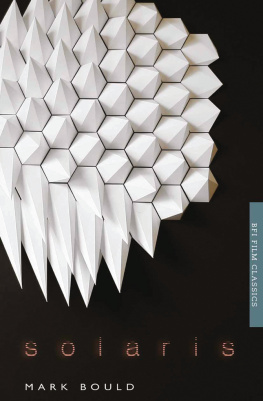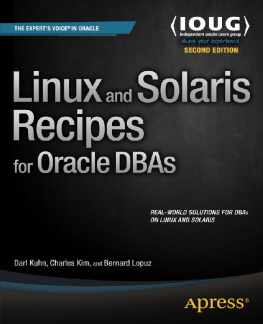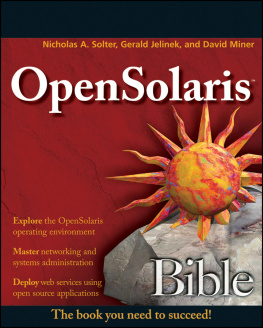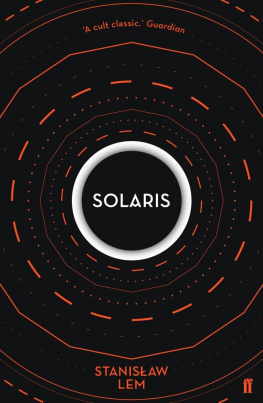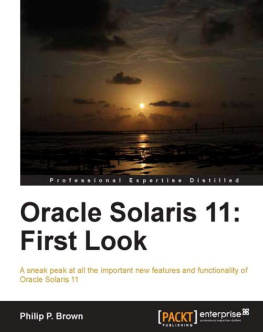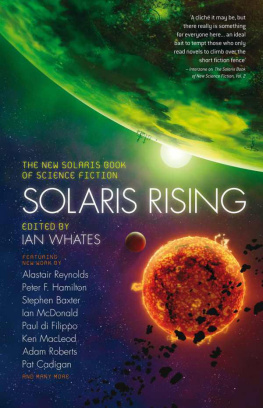McDougall Richard - Solaris Internals: Solaris 10 and OpenSolaris Kernel Architecture
Here you can read online McDougall Richard - Solaris Internals: Solaris 10 and OpenSolaris Kernel Architecture full text of the book (entire story) in english for free. Download pdf and epub, get meaning, cover and reviews about this ebook. year: 2007, publisher: Prentice Hall, genre: Home and family. Description of the work, (preface) as well as reviews are available. Best literature library LitArk.com created for fans of good reading and offers a wide selection of genres:
Romance novel
Science fiction
Adventure
Detective
Science
History
Home and family
Prose
Art
Politics
Computer
Non-fiction
Religion
Business
Children
Humor
Choose a favorite category and find really read worthwhile books. Enjoy immersion in the world of imagination, feel the emotions of the characters or learn something new for yourself, make an fascinating discovery.

- Book:Solaris Internals: Solaris 10 and OpenSolaris Kernel Architecture
- Author:
- Publisher:Prentice Hall
- Genre:
- Year:2007
- Rating:5 / 5
- Favourites:Add to favourites
- Your mark:
- 100
- 1
- 2
- 3
- 4
- 5
Solaris Internals: Solaris 10 and OpenSolaris Kernel Architecture: summary, description and annotation
We offer to read an annotation, description, summary or preface (depends on what the author of the book "Solaris Internals: Solaris 10 and OpenSolaris Kernel Architecture" wrote himself). If you haven't found the necessary information about the book — write in the comments, we will try to find it.
Solaris Internals: Solaris 10 and OpenSolaris Kernel Architecture — read online for free the complete book (whole text) full work
Below is the text of the book, divided by pages. System saving the place of the last page read, allows you to conveniently read the book "Solaris Internals: Solaris 10 and OpenSolaris Kernel Architecture" online for free, without having to search again every time where you left off. Put a bookmark, and you can go to the page where you finished reading at any time.
Font size:
Interval:
Bookmark:
Second Edition
Richard McDougall
Jim Mauro
Sun Microsystems Press

Upper Saddle River, NJ Boston Indianapolis San Francisco
New York Toronto Montreal London Munich Paris Madrid
Capetown Sydney Tokyo Singapore Mexico City
Copyright 2007 Sun Microsystems, Inc.
4150 Network Circle, Santa Clara, California 95054 U.S.A.
All rights reserved.
Sun Microsystems, Inc., has intellectual property rights relating to implementations of the technology described in this publication. In particular, and without limitation, these intellectual property rights may include one or more U.S. patents, foreign patents, or pending applications. Sun, Sun Microsystems, the Sun logo, J2ME, Solaris, Java, Javadoc, NetBeans, and all Sun and Java based trademarks and logos are trademarks or registered trademarks of Sun Microsystems, Inc., in the United States and other countries. UNIX is a registered trademark in the United States and other countries, exclusively licensed through X/Open Company, Ltd.
THIS PUBLICATION IS PROVIDED AS IS WITHOUT WARRANTY OF ANY KIND, EITHER EXPRESS OR IMPLIED, INCLUDING, BUT NOT LIMITED TO, THE IMPLIED WARRANTIES OF MERCHANTABILITY, FITNESS FOR A PARTICULAR PURPOSE, OR NON-INFRINGEMENT. THIS PUBLICATION COULD INCLUDE TECHNICAL INACCURACIES OR TYPOGRAPHICAL ERRORS. CHANGES ARE PERIODICALLY ADDED TO THE INFORMATION HEREIN; THESE CHANGES WILL BE INCORPORATED IN NEW EDITIONS OF THE PUBLICATION. SUN MICROSYSTEMS, INC., MAY MAKE IMPROVEMENTS AND/OR CHANGES IN THE PRODUCT(S) AND/OR THE PROGRAM(S) DESCRIBED IN THIS PUBLICATION AT ANY TIME.
The publisher offers excellent discounts on this book when ordered in quantity for bulk purchases or special sales, which may include electronic versions and/or custom covers and content particular to your business, training goals, marketing focus, and branding interests. For more information, please contact: U.S. Corporate and Government Sales, (800) 382-3419, corpsales@pearsontechgroup.com.
For sales outside the U.S., please contact International Sales, international@pearsoned.com.
Visit us on the Web: www.prenhallprofessional.com
Library of Congress Cataloging-in-Publication Data
McDougall, Richard.
Solaris internals : solaris 10 and OpenSolaris kernel architecture /
Richard McDougall, Jim Mauro.2nd ed.
p. cm.
Mauros name appears first on the earlier edition.
Includes bibliographical references and index.
ISBN 0-13-148209-2 (hardback : alk. paper)
1. Operating systems (Computers) 2. Solaris (Computer file) I. Mauro,
Jim. II. Title.
QA76.76.O63M37195 2006
005.4465dc22
2006015114
All rights reserved. Printed in the United States of America. This publication is protected by copyright, and permission must be obtained from the publisher prior to any prohibited reproduction, storage in a retrieval system, or transmission in any form or by any means, electronic, mechanical, photocopying, recording, or likewise. For information regarding permissions, write to:
Pearson Education, Inc.
Rights and Contracts Department
One Lake Street
Upper Saddle River, NJ 07458
Fax: (201) 236-3290
ISBN 0-13-148209-2
Text printed in the United States on recycled paper at Courier in Westford, Massachusetts.
First printing, July 2006
For Traci, Madi, and Boston
for your love, encouragement, and support...
Richard
Once again...
For Donna, Frank, and Dominick.
All my love, always...
Jim
Over the past decade, a regrettable idea took hold: Operating systems, while interesting, were a finished, solved problem. The genesis of this idea is manifold, but the greatest contributing factor may simply be that operating systems were not understood; they were largely delivered not as transparent systems, but rather as proprietary black boxes, welded shut to even the merely curious. This is anathema to understanding; if something cant be taken apartif its inner workings remain hiddenits intricacies can never be understood nor its engineering nuances appreciated. This is especially true of software systems, which cant even be taken apart in the traditional sense. Software is, despite the metaphors, information, not machine, and a closed software system is just about as resistant to understanding as an engineered system can be.
This was the state of Solaris circa 2000, and it was indeed not well understood. Its internals were publicly described only in arcane block comments or old USENIX papers, its behavior was opaque to existing tools, and its source code was cloistered in chambers unknown. Starting in 2000, this began to change (if slowly)heralded in part by the first edition of the volume that you now hold in your hands: Jim Mauro and Richard McDougalls Solaris Internals . Jim and Richard had taken on an extraordinary challengeto describe the inner workings of a system so complicated that no one person actually understands all of it. Over the course of working on their book, Jim and Richard presumably realized that no one book could contain it either. Despite scaling back their ambition to (for example) not include networking, the first edition of Solaris Internals still weighed in at over six hundred pages.
The publishing of Solaris Internals marked the beginning of change that accelerated through the first half of the decade, as the barriers to using and understanding Solaris were broken down. Solaris became free, its engineers began to talk about its implementation extensively through new media like blogs, and, most importantly, Solaris itself became open source in June 2005, becoming the first operating system to leap the chasm from proprietary to open. At the same time, the mechanics of Solaris became much more interesting as several revolutionary new technologies made their debut in Solaris 10. These technologies have swayed many a naysayer, and have proved that operating systems are alive after all. Furthermore, there are still hard, important problems to be solved.
If 2000 is viewed as the beginning of the changes in Solaris, 2005 may well be viewed as the end of the beginning. By the end of 2005, what was a seemingly finished, proprietary product had been transformed into an exciting, open source system, alive with potential and possibility. It is especially fitting that these changes are welcomed with this second edition of Solaris Internals . Faced with the impossible task of reflecting a half-decade of massive engineering change, Jim and Richard made an important decisionthey enlisted the explicit help of the engineers that designed the subsystems and wrote the code. In several cases these engineers have wholly authored the chapter on their baby. The result is a second edition that is both dramatically expanded and highly authoritativeand very much in keeping with the new Solaris zeitgeist of community development and authorship.
On a personal note, it has been rewarding to see Jim and Richard use DTrace, the technology that Mike Shapiro, Adam Leventhal, and I developed in Solaris 10. Mike, Adam, and I were all teaching assistants for our university operating systems course, and an unspoken goal of ours was to develop a pedagogical tool that would revolutionize the way that operating systems are taught. I therefore encourage you not just to read Solaris Internals , but to download Solaris, run it on your desktop or laptop or under a virtual machine, and use DTrace yourself to see the concepts that Jim and Richard describelive, and on your own machine!
Be you student or professional, reading for a course, for work, or for curiosity, it is my pleasure to welcome you to your guides through the internals of Solaris. Enjoy your tour, and remember that Solaris is not a finished work, but rather a living, evolving technology. If youre interested in accelerating that evolutionor even if you just have questions on using or understanding Solarisplease join us in the many communities at http://www.opensolaris.org. Welcome!
Font size:
Interval:
Bookmark:
Similar books «Solaris Internals: Solaris 10 and OpenSolaris Kernel Architecture»
Look at similar books to Solaris Internals: Solaris 10 and OpenSolaris Kernel Architecture. We have selected literature similar in name and meaning in the hope of providing readers with more options to find new, interesting, not yet read works.
Discussion, reviews of the book Solaris Internals: Solaris 10 and OpenSolaris Kernel Architecture and just readers' own opinions. Leave your comments, write what you think about the work, its meaning or the main characters. Specify what exactly you liked and what you didn't like, and why you think so.

